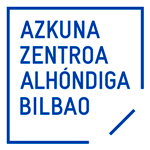
ANTONIO BUCHANNAN
FASHION DESIGN
Madrid, 1984. Degree in Fine Arts from the Complutense University in Madrid, Master’s degree in Contemporary Art at the European University of Madrid.
In 2019 he began his fashion designing career at the brand JARABO, with which he developed different collections that had presence on the MBFW in Madrid (Mercedes-Benz Fashion Week Madrid), MOVE in Seville and Valencia Fashion Week.
In the year 2019 he founded his own fashion brand in Rome: Antonio Buchannan.
In parallel he develops his own artistic work individually, and within the collective Elgatoconmoscas, as well as education and mediation projects in La Casa Encendida or CA2M.
Share:
Colina n.º 8 is a fashion collection with one foot in the site of Testaccio to extend the view further, to a neighbourhood and a contemporary city in a convulsive year. With that in mind, the garments aim to transmit, through textile, a series of concepts such as accumulation, the hidden, the leftovers and information.
The same way that the leftovers from amphoras are piled up, are some pieces of the collection work, overlapping layers of material and patterns to create volume. This accumulation is also presented in the graphic of the prints, as well as in the disposition of different decorative elements of the garments. The language in itself of the attire proposes an orography that establishes what garments are interior or exterior, as well as the diversity in height and length. Every fashion season is another stratum in the closets.
Rome is an accumulation of history, tourists, of exvotos in the churches, of souvenirs in baskets, of starlings flying in flock… But this year, also of living experiences, of messages sent by applications, of relations and, as a novelty, now also of the infected.
The mountain is a grand live cover that hides things, obscures them, camouflaging. In its interior, acting as a corset, there are numerous excavated places such as restaurants, bars and the first clandestine clubs of the city. Some of the pieces of the project remain latent and can be seen if they are opened or unbuttoned, and some of the prints are revealed only under specific conditions of light or heat.
The leftovers of the amphoras of Romain oil were deposited in the Mount dei Cocci and ended up in a landfill. This type of surplus has accompanied that place for centuries, far from the city centre, hosting the carnivals or the ottombrate some seasons, until the first gay places appeared in the 20th century. Testaccio was the area used for test-firing cannons and anti-aircraft support. It hosts the slaughterhouse of the city, which is what would be the influence of the offal, la trippa giving the neighbourhood its fame in gastronomy. Various pieces of the collection are based on the importance in the value of the marginal parts of the garments: the reverse sides, the linings, the belt loops, what is thrown out.
Lastly, the mount is an accumulation of information. The fragments of the amphoras and their tituli picti give us information of the Roman commerce. The pieces of Colina n.º 8 replicate the pattern design beyond its use in the elaboration, they give information of themselves and of their different parts and uses. The textile labels of the composition and how to care for the garment are mass multiplied and are changed into main elements.
The development of Colina n.º 8 was divided into various levels:
In first place, on-field research was undertaken of the Testaccio site, as well as of the archives of the libraries and museums of the city. By extension I also researched the history of the neighbourhood and its neighbours. In this sense, the working months of the project were months of a natural bonding and participation in the life of Rione XX, far from any anthropological vision. Testaccio, then, was my workshop and helped in the search of ideas, almost two kilometres away from the Academy.
At the same time the geographical context itself allowed to broaden the knowledge of the reality of the Italian fashion industry. On one hand, the manufacturers, and workshops on a national level through fabric trade fares and the search of suppliers, but also of the creators and designers who currently work. The present collection, and to a large extent, those of the future, incorporate certain looks to their genetics, procedures and learnt interests of the country.
In parallel, the design process of the collection took advantage of my personal experiences as well as cultural and social references from this time to translate them into a language of plastic and material for the pieces. This language was part of the formal conception of the pieces just as well as it was of the developed prints, research and application of the materials and ornaments.
The end-product of the garments was conditioned by the sanitary alert and its consequences, as it had to be. To try and integrate the absolutely unexpected into the work, to depend on the restrictions or not, to produce, to rethink what had been certain and to fail many times. At the beginning of March, when I was sporadically in Madrid midst plenary process of the project, the borders between both countries closed. The activity was moved 1,400 kilometres from the Academy. To produce in the Iberian Peninsula and to send it to Italy, as in the first century. Back to the starting point: Mount Testaccio.
These months have been an excellent opportunity to rethink the work of design from a more serene perspective and not tied to the rhythm of the fashion industry’s seasons. In this sense, the resident grant allowed me to dedicate time to research of concepts and to the experimentation with new materials and processes.
On the other hand, it was enrichening on a creative level to be able to exchange experiences with professionals who shared time with us and especially with the fellow residents themselves.
